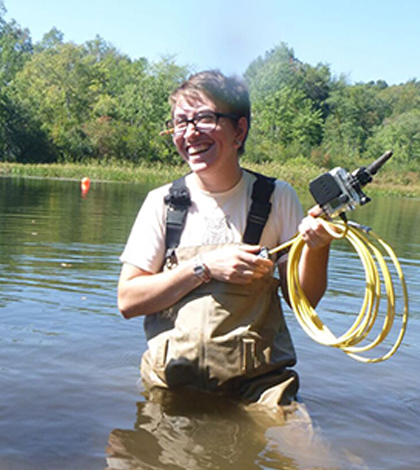Cameras Capture Slow Sediment Shifts After Millie Turner Dam Removal

Researchers are using underwater photography to monitor impounded sediment prior to removal of the Millie Turner Dam. (Credit: Keene State College)
Researchers at Keene State College are investigating the effects of dam removal on downstream sediment deposition, according to a release. Their work is taking place on the Nissitissit River in Massachusetts where the Millie Turner Dam was recently removed.
Scientists at the university, including student researchers, documented sediments in the river upstream and downstream of the dam before its removal. Not surprisingly, areas downstream were starved of sediment before the dam came down. But the big question was really how quickly sediments would surge downstream after the Millie Turner Dam was removed. There was concern that too much too fast could harm aquatic life, including a rare mussel species living there.
To answer that question, investigators have used underwater cameras to document sediments in the river. With the dam removed in 2015, their work has shifted to focus on the impacts. The investigation is still ongoing, but has so far revealed that sediments aren’t returning downstream as quickly as some had predicted. Researchers believe it will still be another year before the full effects of the shifting sediments can be seen.
Top image: Researchers are using underwater photography to monitor impounded sediment prior to removal of the Millie Turner Dam. (Credit: Keene State College)




0 comments